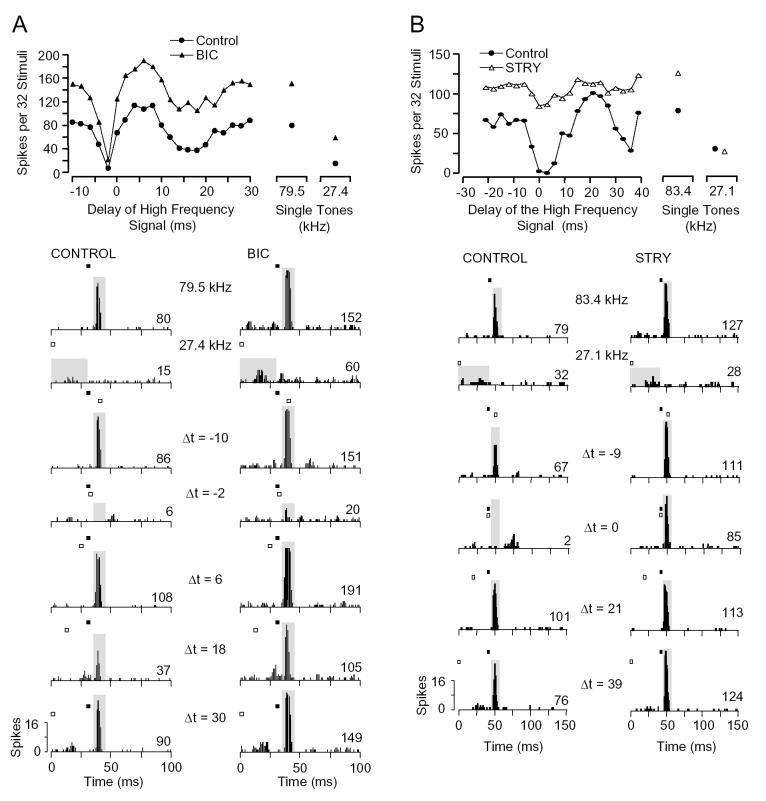Fig. 7.
Inhibition at early and later delays in type I/E inhibitory units is more sensitive to application of STRY than BIC. A: Type I/E inhibitory unit showed inhibition at both short and long delays. Although BIC increased the magnitude of the response to both tones, the inhibition at shorter delays (-2 ms) and longer delays (18 ms) remained. [BF, 79.5 kHz, 35 dB SPL; LF, 27.4 kHz, 53 dB SPL] B: Type I/E inhibitory unit showing inhibition at short and long delays. STRY (15 nA) severely reduced the combination-sensitive inhibition at early delays (centered at 3 ms) and later delays (centered at 39 ms). [BF, 83.4 kHz, 41 dB SPL; LF, 27.1 kHz, 52 dB SPL] See Figure 1 for explanation of graphs.

